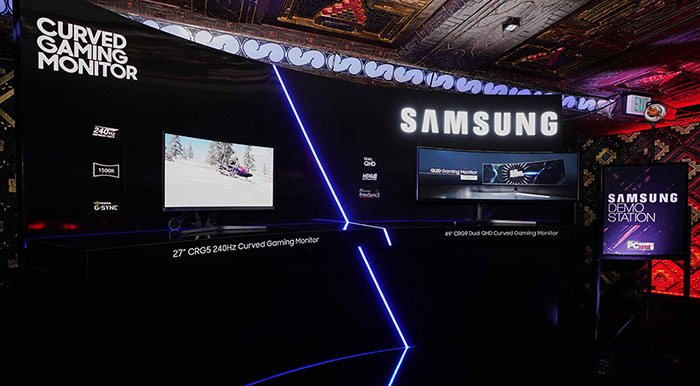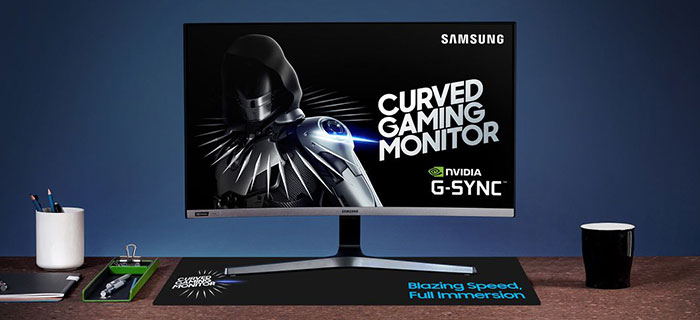Samsung has launched another gaming monitor. In this latest foray into the gaming monitor market, Samsung has armed itself with the CRG5, a 27-inch curved G-Sync compatible monitor supporting very fast refresh rates. This is the first ever monitor designed for G-Sync from Samsung.

Central to the new CRG5 is a display panel with 1500R curvature. As usual for the PR accompanying any curved monitor release, the improved immersive qualities are highlighted. Adding to the immersion on offer are the minimal bezels, and wide viewing angles of the VA panel. The qualities are all well and good for gamers but for this target market probably the highlight will be the G-Sync compatibility and the max refresh rate of 240Hz on offer.
"Combining a 240Hz refresh rate with NVIDIA G-SYNC compatibility in Samsung’s new CRG5 curved gaming monitor gives gamers advanced performance for the most graphic-intense games," said Seog-gi Kim, EVP of the Visual Display Business at Samsung Electronics. The new CRG5 was presented and later demonstrated at the PC Gaming Show, at E3 yesterday.

Some will consider the 1080p resolution rather coarse at 27-inches, but it might be the right choice if gamers are intending to push the frame rates towards the top end of this monitor's range. This display provides a 3000:1 contrast ratio, with the nice inky blacks characteristic of a VA panel. Samsung's CRG5 has a typical brightness is 300cd/m2, and the screen a gtg response time of 4ms.
Dedicated gaming features include; game mode settings for different game genres (plus 3x custom profile slots), low input lag mode, virtual aim point, and black equaliser. More generally useful features are an eye saver mode, and flicker free settings.

Samsung supplies the CRG5 with a tiltable monitor stand and the ports are; DP 1.2, HDMI 2 (x2) and headphones. The monitor will become available globally in Q3 2019, it will cost approx US$399.













